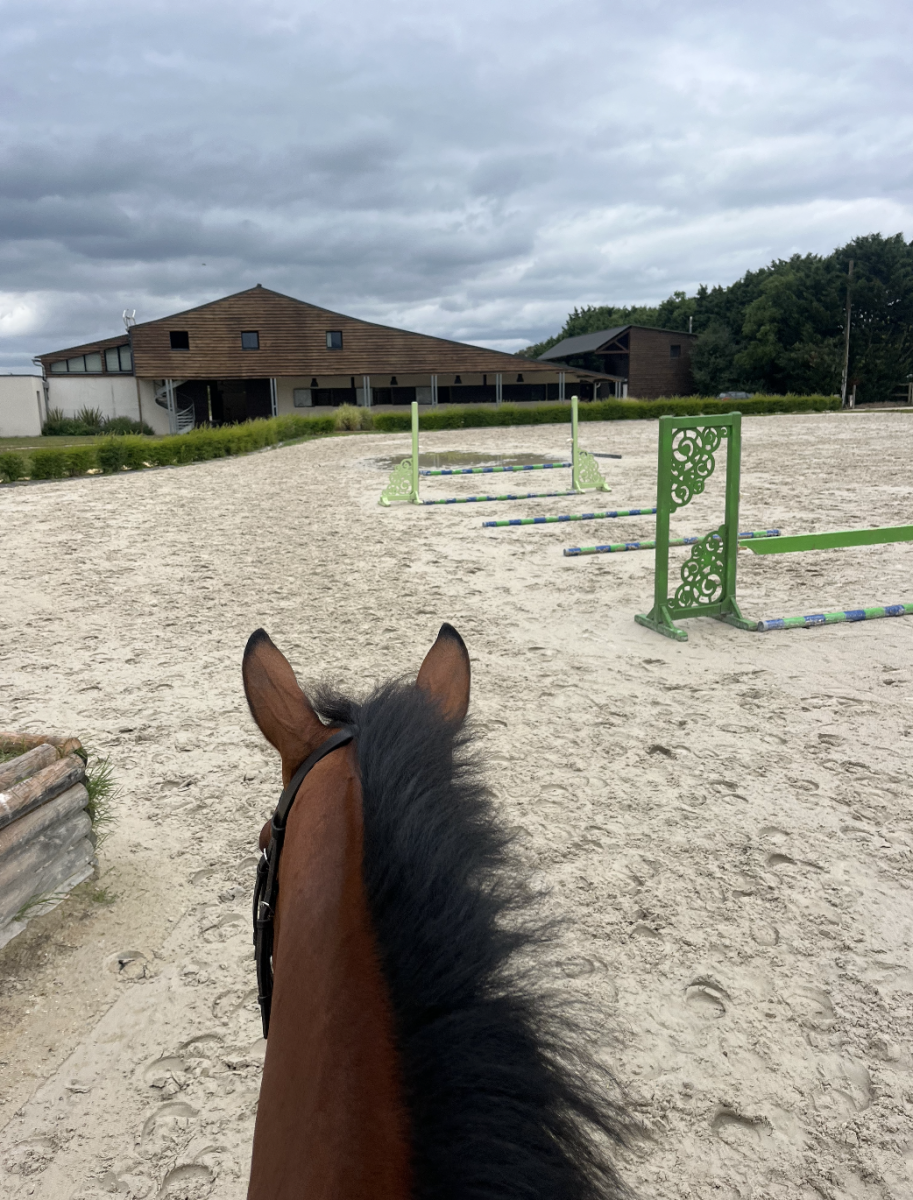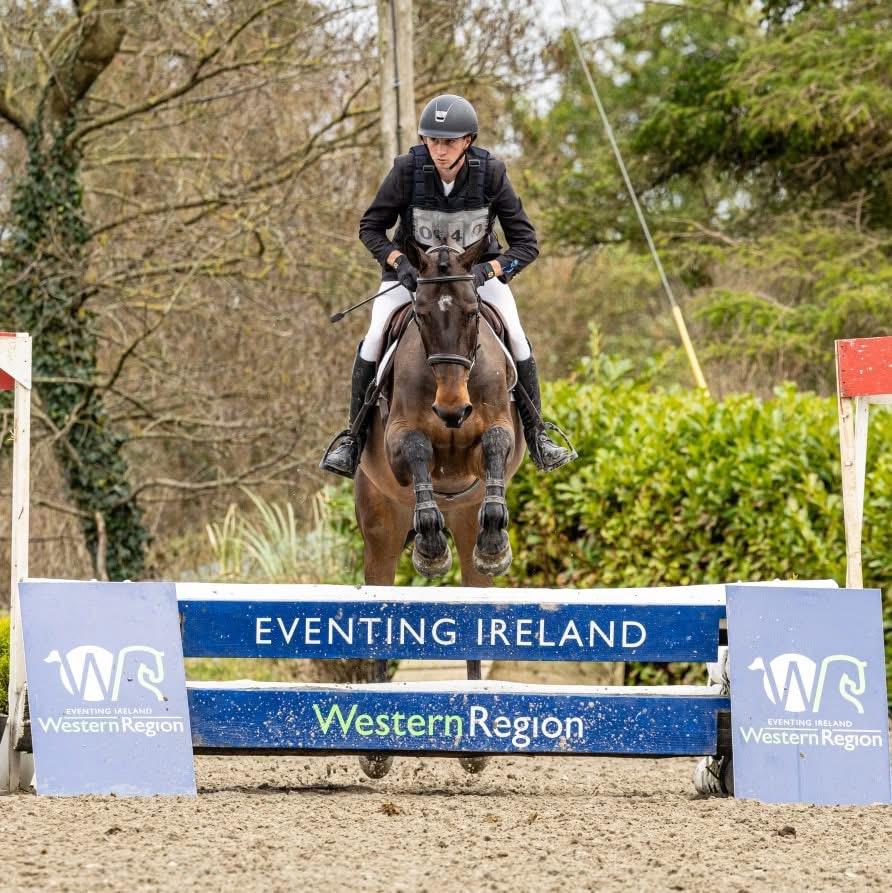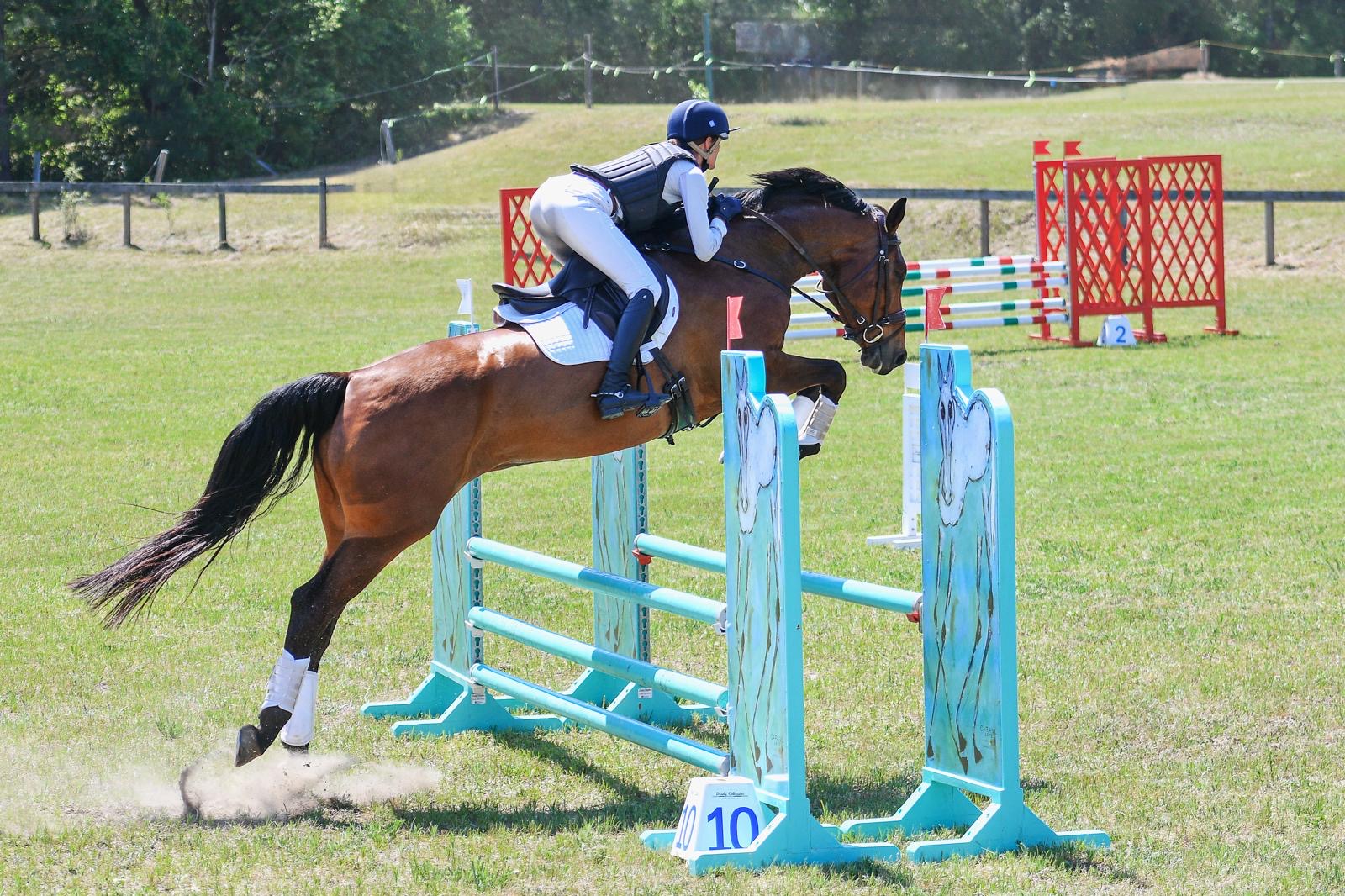
Alexa with Maxime at a recent jumping competition.
It’s a question almost all young horse professionals come to face as they make the jump from the young rider ranks to the professional world: how to improve their own riding while also running a business.
Alexa Thompson, an Advanced event rider who I met back in our Pony Club days, recently took a leap to focus on herself, and she’s still managing to keep her business running as well. She moved from her farm in Lexington, Kentucky all the way to Dénezé-sous-Doué (near Saumur), France to base with French team rider and five-star winner Maxime Livio. She brought three horses with her: her three-star horse called Just to be Clear, and two homebreds named Parlez Clear and Clear Candidate.
It hadn’t been on Alexa’s radar to go to France, but when Maxime came over to America to compete at the Land Rover Kentucky Three-Day Event in April of this year, Alexa hosted him for a clinic at her farm and really enjoyed his help.
Alexa explains that she has always had a ton of responsibility at home, which has made it hard to focus on herself. Thus, she has always thought that leaving and going abroad would be beneficial because she could separate herself from her business, and really hone in on her own skills and riding. After jokingly making a comment to Maxime about whether he took people to come train with him, she then asked more seriously about it after Kentucky (where Maxime finished 6th). He got back to her with a yes, and then it was up to Alexa to figure out how to hatch a plan to actually make it all work.

The yard at home in France.
The Big Move
“Well, I don’t speak French!” Alexa admits in addressing the challenges of the trip — but that didn’t stop her from making the move. Alexa sold her grey 3* horse, Curraghgraigue Clear Future, in the spring to help fund the trip. She had developed that horse from the beginning of his career, but ultimately decided to sell him.
“It was like giving myself a grant to go overseas,” Alexa explains, noting that she also tragically lost one of her young horses in January, which made her rethink where she wanted to invest her time and money. After putting together all of the numbers in a spreadsheet, thinking about the ideal amount of time for her horses and herself to spend in French bootcamp, Alexa headed over to France for a four-month stint to do one thing: get better at the sport.
“I’ve been good, but I’ve felt very average,” Alexa admits. She was competitive as a young rider, but has felt that she was hitting a ceiling when attempting to develop proper FEI horses. She knows that she can take a young horse from scratch up to the mid-levels of eventing quite successfully. What she wanted was the education, and the system, to get her seven to nine year old horses up to the top of the sport.

Alexa and her horses arrived in France at the end of July, and so far, it’s been all she hoped for. She cannot speak highly enough of the program.
“There’s no one else that I’ve ridden with that has made my horses better every ride—especially because I have three very different horses!” Alexa describes the team as genuinely caring about each person in the program.
The Training System
“The system matches the theory, and the results match as well,” says Alexa of Maxime’s training style. Even in her first lessons with Maxime, she felt her horses really improve.
“The flatwork theory translates directly to the jumping,” she explains, describing the way her horses are jumping as “mind-blowingly different.”

If you look closely, you can see that the diagrams in this chalkboard next to Maxime’s arena depict school figures and the shape of a horse’s body.
So, what is this system? I was curious to know more about it. Alexa relayed that these riders have a deep understanding of the biomechanics of the horses. They are always riding from back to front, they are tactful about applying pressure to the horses, and they are adamant about truly finding correct bend through the whole body and finding straightness. In her experience, Alexa found that “in America we’re so stuck on the picture and the end result, and the frame, so we tend to not ride the horses through enough.” The French are known for their forward cross-country riding, and Alexa explained that the jumping philosophy is all about the canter and the turn, and maintaining connection and impulsion.
The training philosophy extends outside the arena too. Alexa described some people’s trot sets as “just mindless trotting,” whereas the trot sets that she has learned to do in France are much more thoughtful about working and training the horses. She described the focus on balance as they trot up and down giant hills in two-point, and the connection between flatwork in the ring and all work outside of the ring.
Maxime has a facility split across a road, with his students’ horses on one side of the road and his own horses on the other side. Alongside having individual students to teach, Maxime is also the coach for the Thai eventing team. He has several other professionals at the facility who back him up—for example, his partner, Mathilde Montginoux, is a Grand Prix show jumping rider, and there are several other coaches and riders who compete at the 4* level. This kind of atmosphere brings everyone to a higher level and breed collaboration in training.
Maxime’s system is also “exceptionally well-organized,” Alexa says. Each night, all riders and staff get an Excel document for the next day listing which horses are doing what and with which coach. Every “t” is crossed and every “i” dotted. Alexa’s description of the command of detail that Maxime has over his horses and the whole program reminded me of an interview I watched with McLain Ward once in which he described his ability to win as being directly related to his superior way of staying extremely organized.
Alexa’s education is not just riding lessons. She notes that getting to watch Maxime produce his own horses is hugely educational. For example, watching how he is bringing along a horse aimed at the Paris Olympics next year. The other benefit of being based in France is that riders can travel to different places in Europe to compete.
“Different countries have different styles of events, so we can really tailor our schedule of events to the horses,” Alexa explains. Alexa recently competed in her first event abroad, and she jumped clear in both XC and SJ at Arville 3*S with Just To Be Clear. She also competed her younger horses at a subsequent event: her eight year olds finished 4th (25.5) and 7th (28.3) out of 84 in the 2*L at Salieu last weekend. Needless to say, it seems that the training process is already translating into excellent results.
The Future
At a recent dressage show, Alexa describes coming out of the ring after a test that did not go entirely to plan. She walked over to her coaches: Maxime was talking to the Ecurie Livio dressage coach, Serge Balbin, in French. Alexa said “you aren’t allowed to talk about me in French!” Maxime explained: “okay, we were just saying that we had our work cut out for us with you!” They laughed. That’s why Alexa is there: to focus on herself and her horses and to get better.
Alexa’s plan is to compete at Strzegom in October at the 3* and 4* level. Her longtime groom and manager, Hannah Warner, will fly over to France for that event. Montelibretti and Le Pouget are part of the plan for November. After that, Alexa plans to fly back home with her horses at the end of November.
Alexa admits that she has struggled with feeling guilty for leaving her clients, but she is still managing it from afar, including doing Pivo lessons. Of course, Hannah is on the ground at home keeping everything running smoothly as well. Hannah knows the barn inside and out and has been working for Alexa for four years.
The most exciting part is that Maxime will come back to do clinics and also teach Alexa remotely once she is back in the States. Alexa underscores just how grateful she is for the support she has, and for the wonderful opportunity this is. Allez, allez, allez, Alexa — we are so excited to see what your career has in store for you.

































